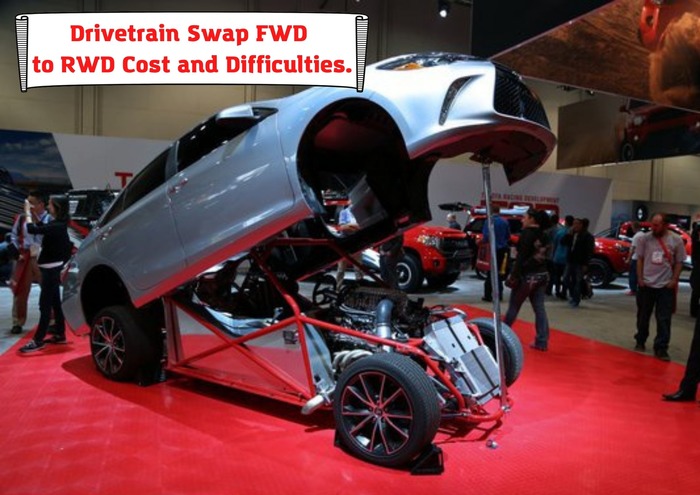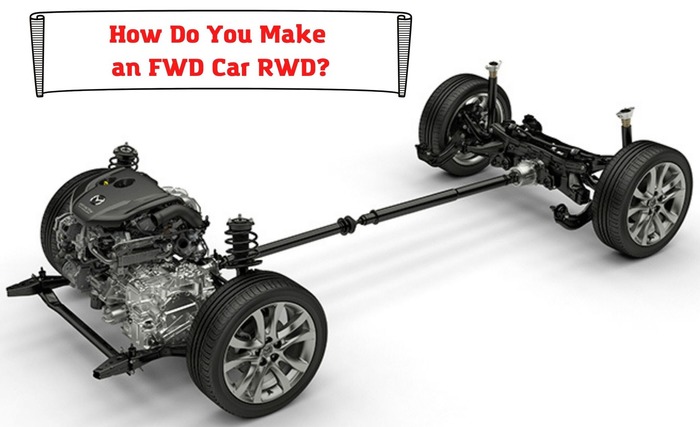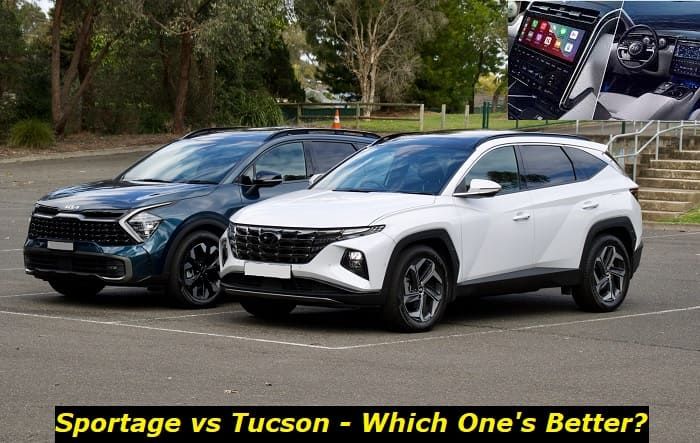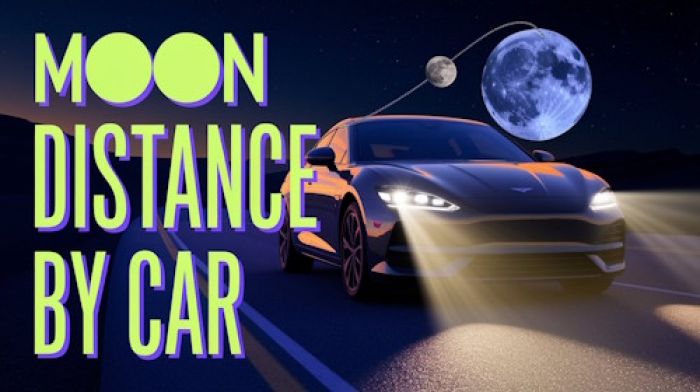
Is it possible to swap to RWD from an FWD drivetrain? If it is possible, what is the cost of shifting the transmission power from the front wheels to the rear wheel? What difficulties are you likely to come up against as you convert your drivetrain to RWD?
It is such a pleasure to drive an RWD car. Yeah sure, pleasure and delight vary from person to person. But the thrill you get initiating and controlling oversteers with an RWD car is out of this world. This should be a standard definition of pleasure and fun. Imagine this, you are accelerating towards a corner, you hit the throttle, your car swivels underneath causing profuse tire smoke, you control the swiveling, and emerge out of the corner and tire smoke intact. If this isn't pleasurable, what is? An FWD car cannot give such pleasure. You will have to get an RWD car or swap your FWD car to an RWD car if you desire to amp up your driving skills.
Is It Possible to Convert FWD to RWD?
Yes, it is. You can do any sort of modification to your car if you have the right tools, car parts, money, and skills. An FWD to RWD conversion is not a recently discovered concept in the auto world. Manufacturers within the auto world have conducted countless experiments to find the perfect FWD to RWD conversion procedure.
How Much Does It Cost to Convert FWD To RWD Drivetrain?
The cost will depend on the model of the FWD car you intend to convert. All in all, it is quite costly to convert an FWD drivetrain to an RWD drivetrain. If you already have an RWD engine it would be cheaper to convert your FWD car to an RWD car. Otherwise, you may part with more than $25,000 to convert your FWD to an RWD car. The conversion cost and process are not for the faint-hearted. It needs time, effort, top-notch car conversion skills, and very (emphasis on very) deep pockets.
Don't take the easy way out if you love challenging car projects. Delve in and convert your FWD to RWD drivetrain.
Why Should You Take the Risk and Convert Your FWD To RWD?
There is a reason why most sport and performance cars use an RWD drivetrain. RWD drivetrain allows complicated driving techniques, gives the driver unrivaled control, and superior road handling. Besides, the RWD setup allows the use of a high-powered engine. This means you can run higher power figures with your RWD car.
When the rear wheels hold the transmission power, they give better traction when accelerating a car. When put side to side with an FWD car, an RWD car exhibits a powerful acceleration from a stop. The car's weight moves to the rear adding more weight to the car's rear. The increase in weight increases tires traction that lets out a powerful and faster acceleration.
RWD drivetrain exhibits better cornering than FWD. If you have driven both FWD and RWD cars you may have noticed the difference in how the two cars navigate turns and curves. An RWD car feels nicely weighted when navigating corners. You don't need too much effort to control your car as it maneuvers a corner. Rather than the car steering you, you feel more in controlling navigating a turn or a curve.
RDW cars don’t steer to one side when pulling through a heavy acceleration. This occurrence is common with FWD cars. It is petrifying, particularly if you are new to driving.
How Do You Make an FWD Car RWD?

To convert your FWD car to an RWD car, you will need the following
- Engine
- Differential
- Suspension system
- Subframe
- A new or a modified exhaust system
You can convert your FWD car to an RWD car by remounting the engine and re-routing the driveshaft in your FWD to an RWD orientation.
FWD cars have front-mounted engines. They can be longitudinal (inline) or transverse (sideways). Check whether your engine is sideways or inline. Most FWD cars have engines that face right to left to give room for the driveshaft. Transverse engines take up less space giving enough room for the driveshafts without compromising or reducing the car's interior space.
Besides the front-mounted engines puts extra weight on the front of the car. This maximizes front-wheel traction and makes the car more stable as it accelerates or maneuvers slippery road surfaces.
Sadly, a transverse engine limits the car’s capability and causes torque steer in FWD with side-mounted engines. Transverse engines also limit the amount of power output in an FWD car. This is the reason why high-performance cars use longitudinal engines.
If the engine is sideways, you will need to remount it to the centerline of your vehicle. Basically, it should face front to back. As you remount the engine, set it in a manner that creates a leveled path from the crankshaft to the rear differential.
The challenge with this method is re-routing and getting enough space for the driveshaft. The driveshaft in FWD cars takes transmission power to the front wheels. To transfer power to the rear wheels you will need to re-route the driveshaft to the rear of your car. You may have to change the gearbox set up and sacrifice some space in the car’s cabin. You will need a longitudinal transaxle gearbox. You can get a new one or repurpose a transaxle from a vehicle with a longitudinal FWD or RWD setup.
The process is not as easy as it sounds. Re-routing transmission power to the rear wheels will mean creating a tunnel that runs through the passenger compartment unless you want to mount the engine on the back of the car. This will still eat up space in the passenger compartment.
You will need to reinforce the new components to enhance the safety and drivability of the modified car. The rear suspension will have to adequately support the driveshaft and if you plan to mount your new engine on the car trunk, you will need additional suspension to support the added weight.
The engine gives a car its attributes and performance capabilities. So, this method is preferable if you have a high-powered FWD. A V6 and above FWD model increases the probability of building a high-powered RWD. If you have decided to convert your car into an RWD, it would be worthwhile if you go for a high-powered engine. If your engine is longitudinally placed, the whole process would be much easier.
Alternatively, you can dismantle your car, customize a frame for the new drivetrain, and replace and assemble all the major components that support the RWD drivetrain. Lastly, put everything back together. You can mount your engine on the front or the rear of your car.
Converting An FWD With a Four-Wheel-Drive Option
The process would be a little bit easier if your FWD has a four-wheel-drive option. FWD with a four-wheel-drive option has a driveshaft across the length of the car. Such cars also have a rear axle and gearbox that support the RWD setup. A few modifications and cutting off the transmission power to the front wheels will convert your FWD to RWD.
Legality and Insurance of FWD to RWD Modified Cars
A conversion of this magnitude may have legal and insurance implications. The legality of such cars differs from state to state. In most countries, one cannot drive FWD to RWD-converted cars on the road. You will need to get an inspection, new VIN, and safety check before taking it for a test drive. You may have to insure the modified car as a kit or a modified vehicle.
What Could Possibly Go Wrong with the Conversion
A successful conversion ends in a drivable and road-worthy car. In all respect, it is hard to run a successful FWD to RWD conversion project. In addition to the structural changes to house the new engine orientation, you may have to change other components to successfully convert your car. There is a high probability you will need to change the steering column and rack, radiator, intercooler pipes, fuel tank, gear shifter, and a whole jumble of other components to make the modified car drivable.
As you can see, the whole process involves dismantling, reassembling, and reconnecting different car components. You need to ensure all these components are properly installed and connections intact. One loose connection may mess up everything.
You may also encounter problems with wheelbase. Try to match your wheelbase with the structural modifications of the modified car.
You cannot depend on dependent suspensions present in FWD. To avoid the chances of flipping during oversteer or when drifting, you will need independent suspension systems. You need to get a suspension system that is compatible with the differential or axle you intend to put in the modified car. This means digging deeper into your pocket to get a good independent suspension system.
Apart from the cost and difficulty to convert the car, it would be challenging to legally register the modified car.
Final Thoughts
Although tiresome and costly, you can convert an FWD car into a drivable and road-worthy RWD car. You need to check and double all the installations and modifications before taking the car for a test drive or registration.
About the authors
The CarAraC research team is composed of seasoned auto mechanics and automotive industry professionals, including individuals with advanced degrees and certifications in their field. Our team members boast prestigious credentials, reflecting their extensive knowledge and skills. These qualifications include: IMI: Institute of the Motor Industry, ASE-Certified Master Automobile Technicians; Coventry University, Graduate of MA in Automotive Journalism; Politecnico di Torino, Italy, MS Automotive Engineering; Ss. Cyril and Methodius University in Skopje, Mechanical University in Skopje; TOC Automotive College; DHA Suffa University, Department of Mechanical Engineering






Add comment